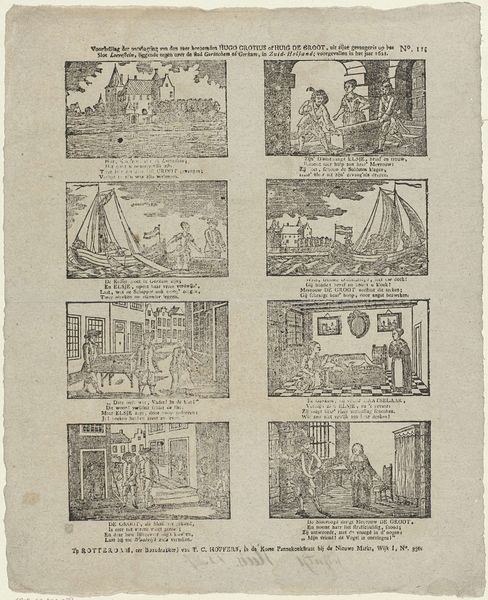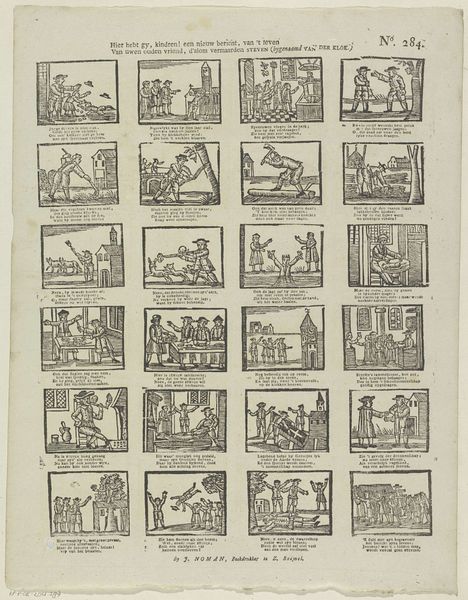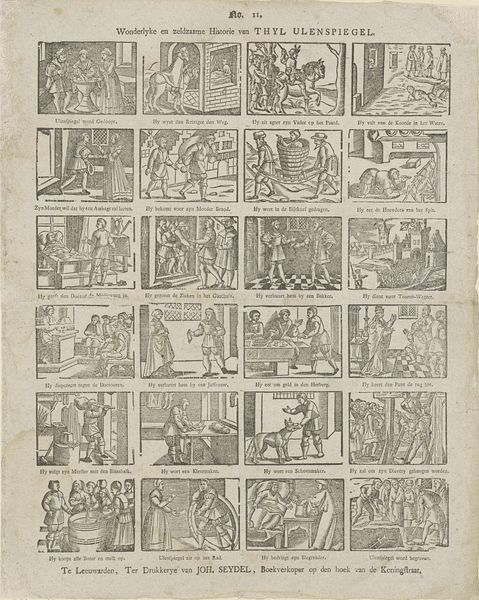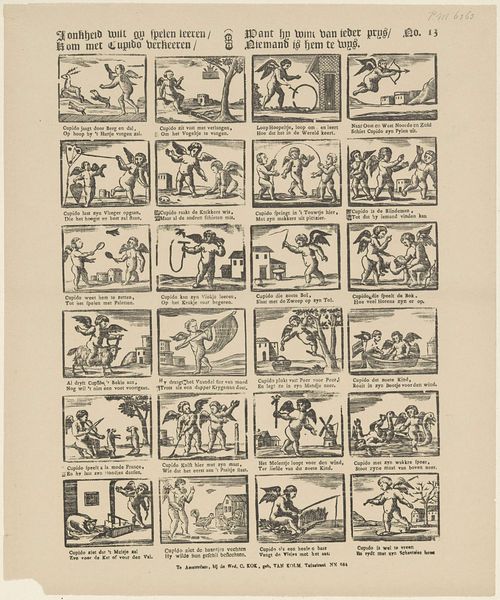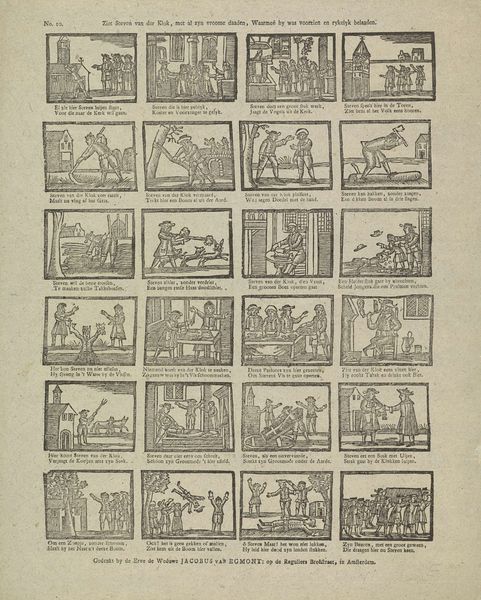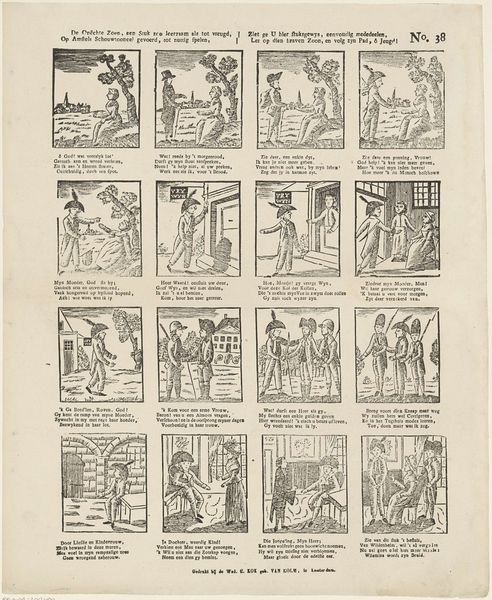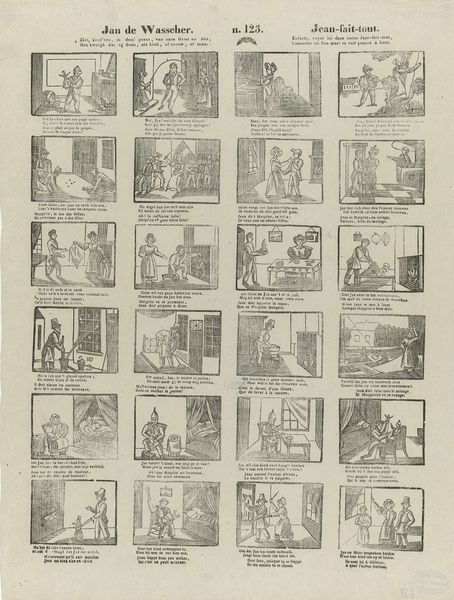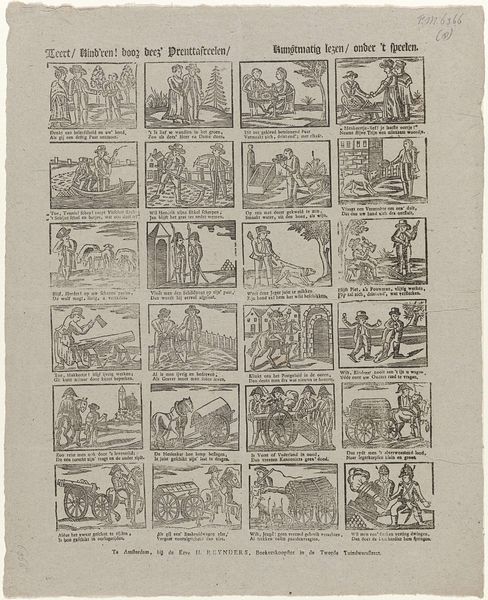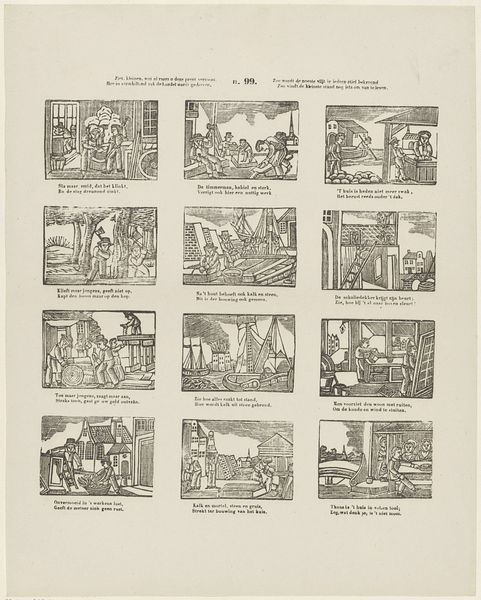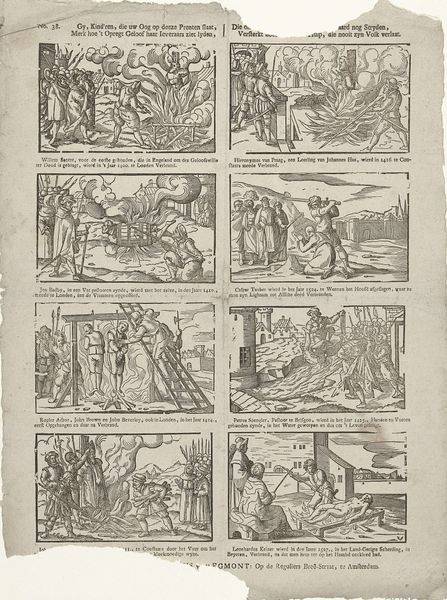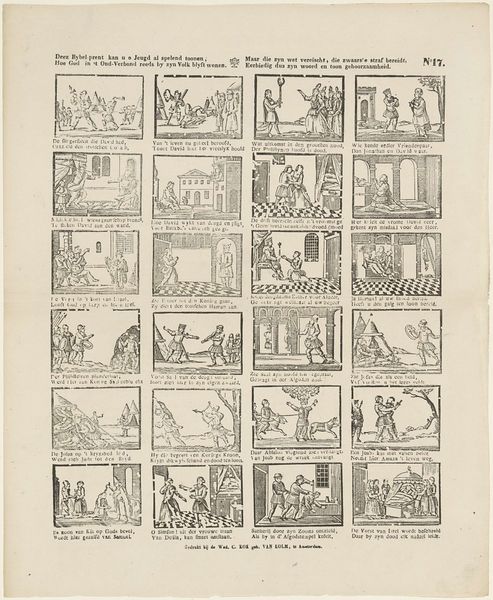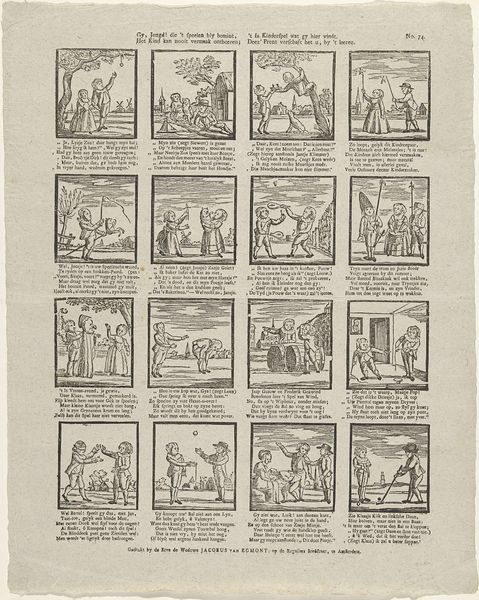
print, woodcut
#
comic strip sketch
#
narrative-art
# print
#
figuration
#
folk-art
#
woodcut
#
comic
#
line
Dimensions: height 390 mm, width 336 mm
Copyright: Rijks Museum: Open Domain
Editor: This is "Klein Duimkens leven / Vie du petit Poucet" made sometime between 1856 and 1900 by Glenisson & Zonen. It appears to be a woodcut print arranged in a grid like a comic strip. It’s fascinating how the artist uses such simple lines to depict an entire narrative. What strikes you most about its visual construction? Curator: The composition is intriguing. Each frame is a self-contained unit, yet the arrangement creates a sequential rhythm across the entire surface. Note the consistent use of line—it dictates form, volume, and texture, despite its inherent simplicity. The stark contrast between black and white is also crucial; it lends a certain drama and immediacy to the storytelling. What do you make of the line quality in relation to the narrative? Editor: It seems pretty basic, like a child’s drawing. Does that lack of complexity diminish its artistic value? Curator: Not at all. It invites a closer inspection of its formal choices. Consider how the artist uses the negative space, for instance. The areas of white are not merely voids, but active components that define the figures and environment. Also, the somewhat crude linework actually enhances the folk-art feel. Can you see how this approach allows the story to be more readily accessible? Editor: I think so. By focusing on simple shapes and lines, the artist directs our attention to the story itself rather than getting bogged down in details. Curator: Precisely. The visual elements are subservient to the narrative’s unfolding. It’s an interesting prioritisation. Editor: I see it differently now. It’s not about technical skill, but effective communication through basic forms. Curator: Indeed, the power lies in its elementary, yet impactful, design.
Comments
No comments
Be the first to comment and join the conversation on the ultimate creative platform.
